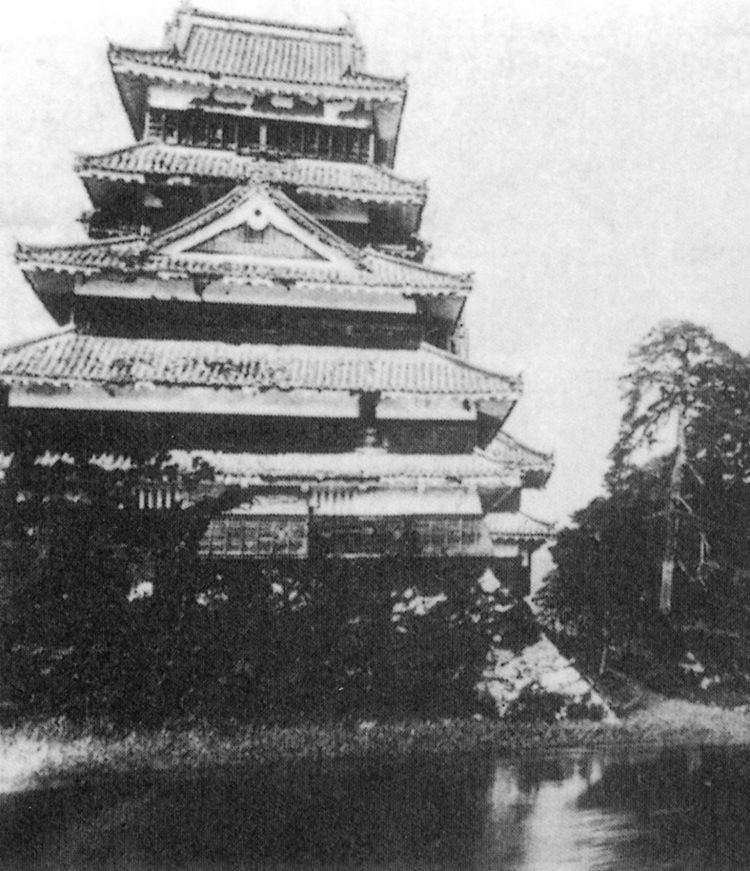Built by Shimadachi Sadanaga Materials Earth, stone, and wood Year built 1504 Function Castle | In use 1504 to 1868 Height 30 m Phone +81 263-32-2902 | |
 | ||
Condition Original keep (tenshu) and inner walls survive, several gates have been rebuilt since 1960 Hours Closed now Wednesday8:30AM–5PMThursday8:30AM–5PMFriday8:30AM–5PMSaturday8:30AM–5PMSunday8:30AM–5PMMonday(Vernal Equinox Day)8:30AM–5PMHours might differTuesday8:30AM–5PM Similar | ||
Matsumoto castle in japan
Matsumoto Castle (松本城, Matsumoto-jō) is one of Japan's premier historic castles, along with Himeji Castle and Kumamoto Castle. The building is also known as the "Crow Castle" (烏城, Karasu-jō) due to its black exterior. It was the seat of the Matsumoto domain. It is located in the city of Matsumoto, in Nagano Prefecture and is within easy reach of Tokyo by road or rail.
Contents
The keep (tenshukaku), which was completed in the late sixteenth century, maintains its original wooden interiors and external stonework. It is listed as a National Treasure of Japan.
Matsumoto Castle is a flatland castle (hirajiro) because it is not built on a hilltop or amid rivers, but on a plain. Its complete defences would have included an extensive system of inter-connecting walls, moats, and gatehouses.
Matsumoto castle 4k ultra hd
History
The castle's origins go back to the Sengoku period. At that time Shimadachi Sadanaga of the Ogasawara clan built a fort on this site in 1504, which originally was called Fukashi Castle. In 1550 it came under the rule of the Takeda clan and then Tokugawa Ieyasu.
When Toyotomi Hideyoshi transferred Ieyasu to the Kantō region, he placed Ishikawa Norimasa in charge of Matsumoto. Norimasa and his son Yasunaga built the tower and other parts of the castle, including the three towers: the keep and the small tower in the northwest, both begun in 1590, and the Watari Tower; the residence; the drum gate; the black gate, the Tsukimi Yagura, the moat, the innermost bailey, the second bailey, the third bailey, and the sub-floors in the castle, much as they are today. They also were instrumental in laying out the castle town and its infrastructure. It is believed much of the castle was completed by 1593–94.
During the Edo period, the Tokugawa shogunate established the Matsumoto Domain, of which the Matsudaira, Mizuno, and others were the daimyōs.
For the next 280 years until the abolition of the feudal system in the Meiji Restoration, the castle was ruled by the 23 lords of Matsumoto representing six different daimyō families. In this period the stronghold was also known as Crow Castle (烏城, Karasu-jo) because its black walls and roofs looked like spreading wings.
Preservation
In 1872, following the Meiji Restoration, the site, along with many former daimyōs' castles, was sold at auction for redevelopment. When news broke that the keep was going to be demolished, however, an influential figure from Matsumoto, Ichikawa Ryōzō, along with residents from Matsumoto, started a campaign to save the building. Their efforts were rewarded when the tower was acquired by the city government.
In the late Meiji period the keep started to lean to one side. An old picture (shown here) clearly shows how the keep looked then. It was because of neglect coupled with a structural defect, but many people believed the tower leaned due to the curse of Tada Kasuke. He had been caught and executed for attempting to appeal unfair tax laws (Jōkyō uprising).
A local high school principal , Kobayashi Unari, decided to renovate the castle and appealed for funds. The castle underwent "the great Meiji renovation" between 1903-1913. It underwent another renovation "the great Shōwa renovation" during the period 1950-1955.
In 1952 the keep, Inui-ko-tenshu (small northern tower), Watari-yagura (roofed passage), Tatsumi-tsuke-yagura (southern wing), and Tsukimi-yagura (moon-viewing room) were designated as national treasures.
In 1990, the Kuromon-Ninomon (second gate of the Black Gate) and sodebei (side wall) were reconstructed. The square drum gate was reconstructed in 2002.
Matsumoto Castle was damaged in a 5.4 magnitude earthquake on June 30, 2011. The quake caused approximately ten cracks in the inner wall of the main tower.
There is a plan for restoring the soto-bori (outer moat), which was reclaimed for a residential zone.
The second floor of the main keep features a gun museum, Teppo Gura, with a collection of guns, armor, and other weapons.
Literature
(In Japanese)
